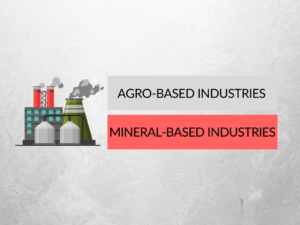Engaging Intro:
PLC and SCADA are two vital components in the field of automation and control engineering. Engineers around the world use both terms interchangeably, but they are not the same. Each has different functions, capabilities, and applications. In this article, we will uncover the differences between the two and their varying use cases.
What is PLC?
PLC or programmable logic controller is a computer device used to automate industrial processes that require continuous control and monitoring. It is a digital computer that receives and processes data from sensors, switches, and relays, and acts upon that data to perform specific actions.
Examples of PLC:
PLCs can be used in various industries, including manufacturing, semiconductor, food processing, and automotive. A few examples where PLCs are used are:
1. Automotive Assembly Line: PLC manages and monitors the assembly process in automotive industries.
2. Power Generation Plants: PLC controls the generators that provide a stable and continuous power supply to homes and offices.
3. Pneumatic systems: PLC frequently used in pneumatic systems such as the production lines of chocolates, milk, and soft drinks.
Uses of PLC:
The distinguishing features of PLCs are their fast decision-making ability and flexibility, which make it ideal for industrial processes. PLCs are highly preferred in various processes that require automation and a high level of reliability. Other uses of PLCs are:
1. To Control Temperature
2. Traffic Lights Control
3. Robotics Assembly Line
4. Conveying Systems
5. Process Control
What is SCADA?
SCADA stands for Supervisory Control and Data Acquisition. It is a system used in industries to control and monitor the complete industrial process. SCADA contains both hardware and software components that control the machinery and processes.
Examples of SCADA:
SCADA is used in several industries, including power generation, water treatment, oil and gas, and transportation. Examples are:
1. Electric Power Generation Plant: SCADA monitors and controls power transmission devices such as transformers, transmission lines, and generators.
2. Water Filtration Plant: SCADA is used to monitor the filtration process and control the water level to prevent overflows and underflows.
3. Oil and Gas Industry: SCADA monitors refinery systems and manages logistic operations.
4. Railway Transport System: SCADA controls train systems, tracks, and signals.
Uses of SCADA:
SCADA systems are widely used in various sectors worldwide, and the main purpose is to automate and optimize industrial processes. Some of the uses are:
1. To Monitor the Industrial Process
2. Increase Efficiency
3. Manage and Store Data
4. Implement and Track Safety measures
5. Detect and Troubleshoot faults
Differences Table:
In the table below, we have outlined ten significant differences between PLC and SCADA systems.
| Differences Area | PLC | SCADA |
|—————————-|——————————————————-|—————————————————————————————————————————————————————————————————————————————————————|
| Control and Monitoring | Provides Control and Monitoring Capability | More Emphasis on Supervisory Control and Data Acquisition |
| Hardware | Mainly Hardware-Based | Software and Hardware-based |
| Architecture | Centralized Architecture | Distributed Architecture |
| Complexity and Flexibility | Provide more explicit and Flexibility | Less Flexible and More Complex |
| User Interface | Less Complex and Fewer Features | More Complex User Interface with Advanced Management capabilities |
| Application | Used where the Process Requires Continuous Monitoring | Used in Large Industrial Processes where Complete control is necessary |
| Cost | Lower Cost Compared to SCADA Systems | Higher cost because of complex hardware and software components |
| Data Gathering | Collects data from limited sensors and devices | Collects, Stores Data from Large Numbers of Sensors and Devices thereby providing comprehensive analysis and detailed reports at fine levels of detail. |
| Response Time | Extremely Fast Response Time | Moderately Fast Response Time |
| Safety | Limited Safety Features | Widely Used for Safety-critical applications |
Conclusion:
In conclusion, both PLC and SCADA systems have different applications, which depend on the type of industrial process to be observed or controlled. While PLC provides real-time control and automation, SCADA is used for large-scale industrial tracking and management.
Knowledge Check:
1. What does PLC stand for?
Answer: Programmable Logic Controller
2. What is the primary application of PLC?
Answer: Used where the process requires continuous monitoring
3. What does SCADA stand for?
Answer: Supervisory Control and Data Acquisition
4. What distinguishes SCADA from PLC?
Answer: SCADA emphasizes supervisory control and data acquisition.
5. Can SCADA work without hardware components?
Answer: No, SCADA requires hardware to function.
6. Which has a distributed architecture, PLC or SCADA?
Answer: SCADA has a distributed architecture.
7. Which of the two is costlier, PLC, or SCADA?
Answer: SCADA is costlier because of its complex hardware and software components.
8. What is the essential advantage of using SCADA?
Answer: SCADA provides comprehensive data analysis and detailed reports of industrial processes at a fine level of detail.
9. Which is faster in response, PLC, or SCADA?
Answer: PLC is faster in response time.
10. Which of the two is widely utilized for safety-critical applications?
Answer: SCADA is widely used for safety-critical applications in industries.
Related Topics:
1. The role of Industrial Automation in the Manufacturing Industry
2. Control Systems: Open-loop control and closed-loop control.
3. Distributed Control Systems (DCS): How is it different from PLC?
4. The importance of Machine Learning and AI in Industrial Control.
5. Advantages and Disadvantages of PLC.


